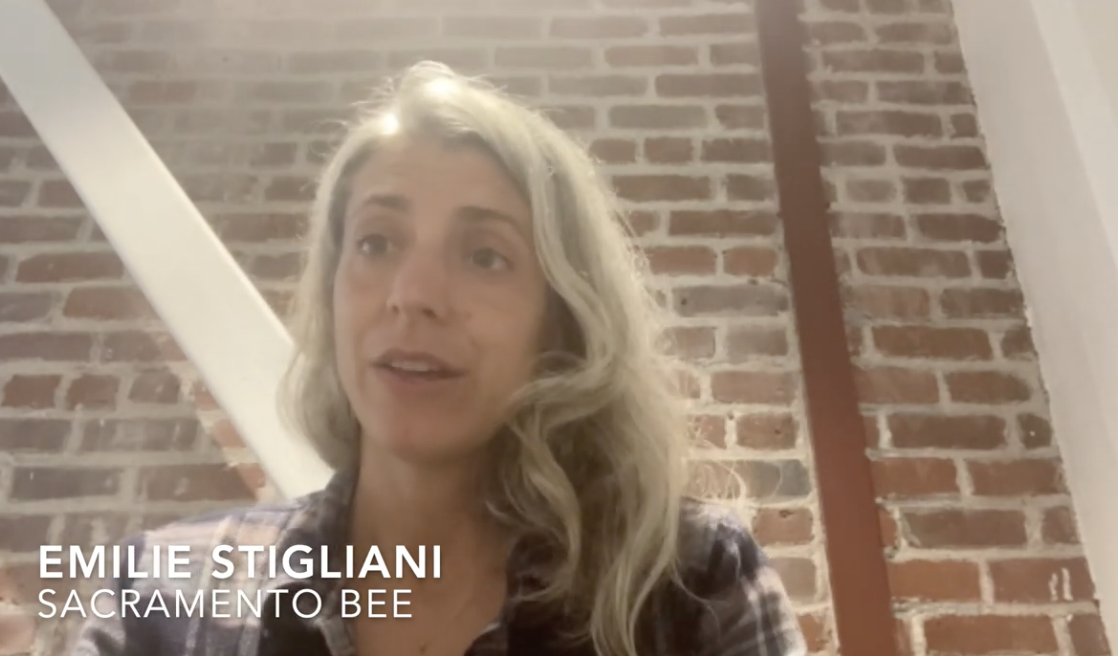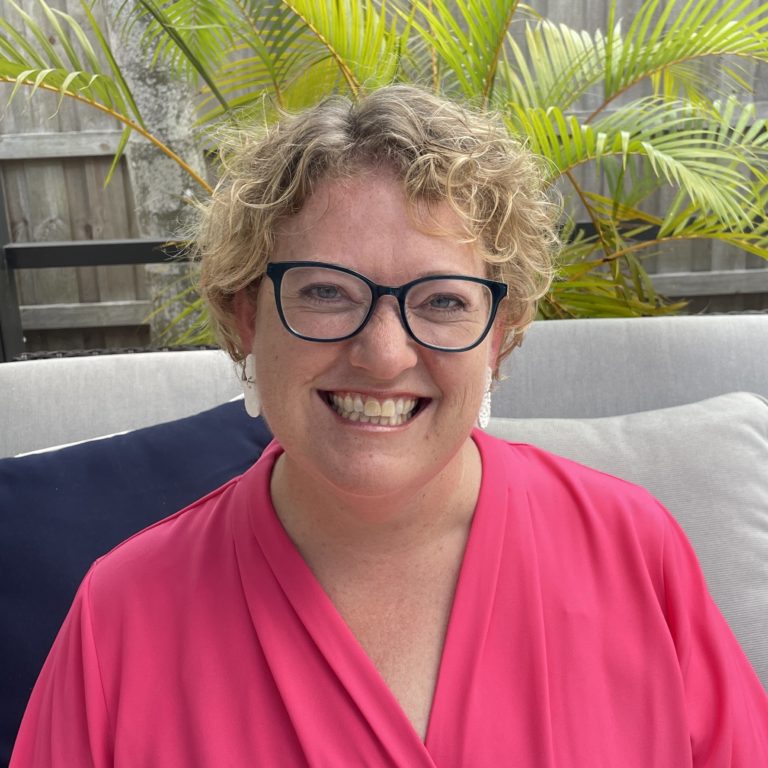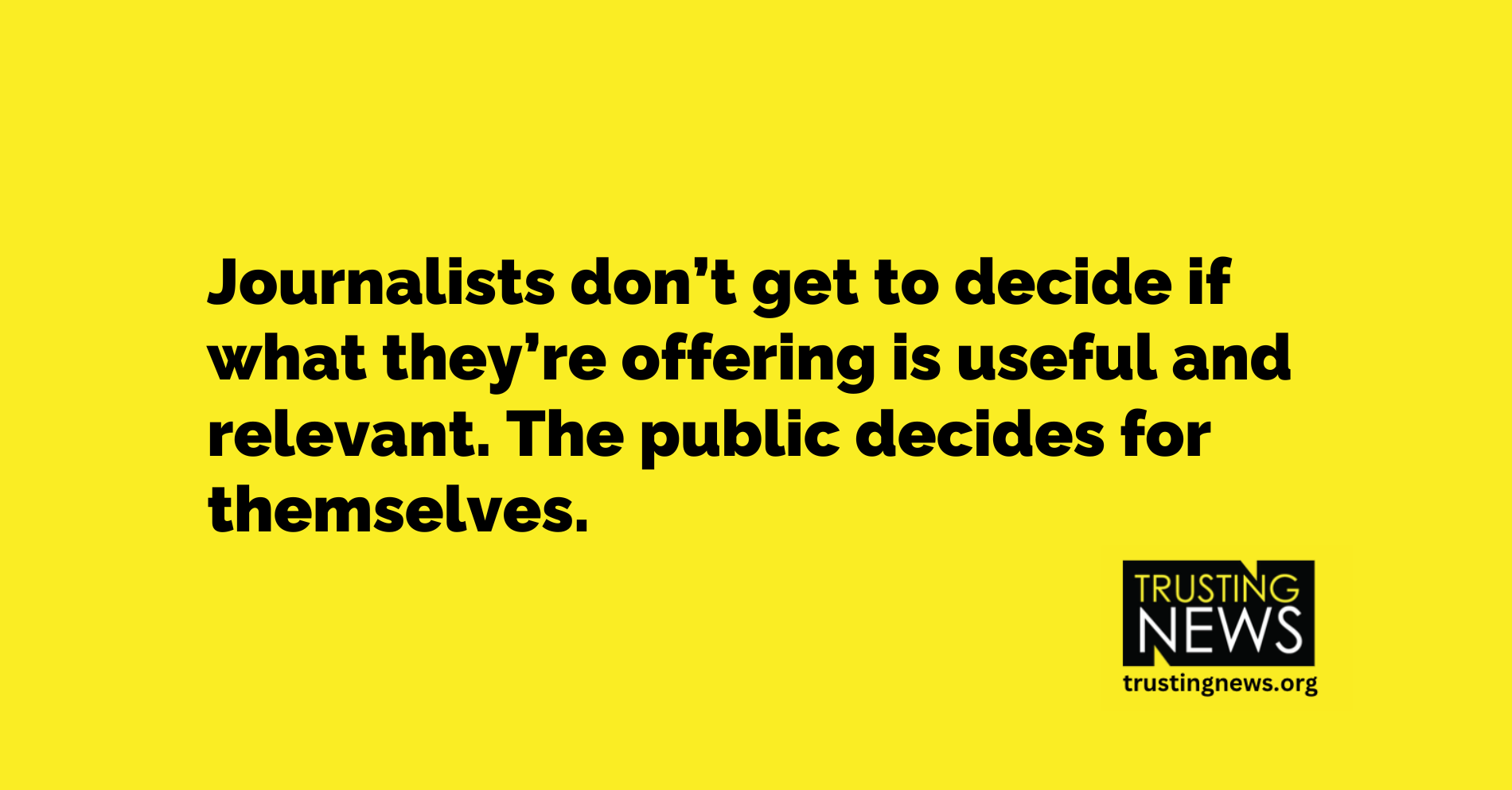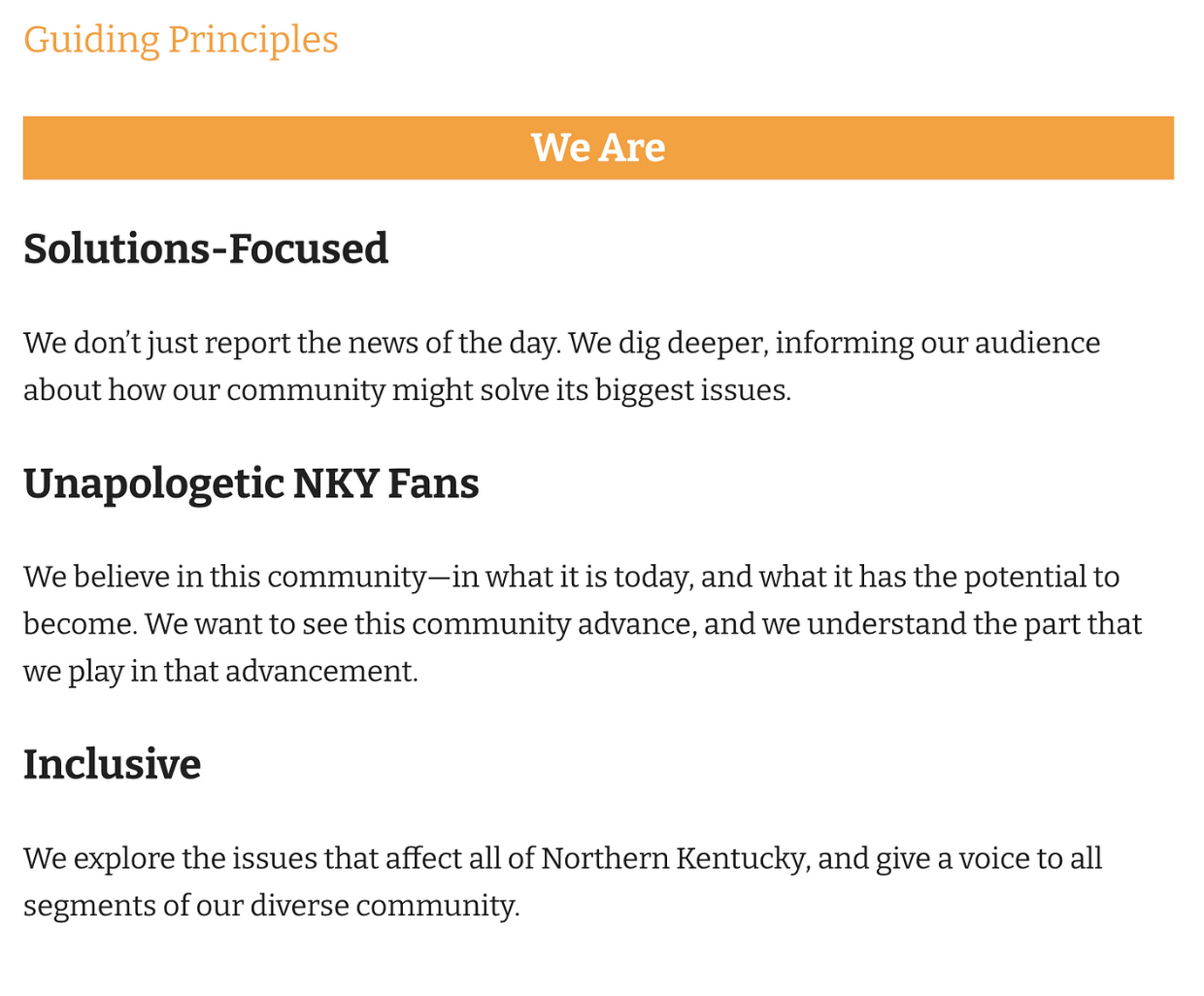
At Trusting News we wanted to see how journalists would feel after committing to using a depolarizing lens with some of their coverage for two months. Here’s what we learned: At Trusting News we rely on newsroom partners as we craft advice for journalists who want to build trust with the people they aim to […]
Advice from journalists: Why and how we’re depolarizing our news
At Trusting News we wanted to see how journalists would feel after committing to using a depolarizing lens with some of their coverage for two months. Here’s what we learned:
- They said their journalism improved.
- They said they have a deeper appreciation of how their audience perceives their work, and those new insights will impact their processes going forward.
- They co-created a checklist for other journalists to use.
- They recommend other journalists use it!
At Trusting News we rely on newsroom partners as we craft advice for journalists who want to build trust with the people they aim to serve. That means with projects like this, our strategies are tested by other journalists.
This post will address what was learned when newsrooms tested an anti-polarization checklist created by the Trusting News team and partner journalists. You can also check out a step-by-step guide for using the anti-polarization checklist here. And find insights and suggestions from our research team here.
What problem is the checklist designed to solve?
Communication involves senders and receivers. Journalists’ messages are not always interpreted in the way they were intended. Plus, people with different sets of experiences, world views and assumptions naturally see the world differently.
That makes it especially important to interrupt our routines with user-focused questions inviting us to consider how our content might land for parts of our community — and how our own values might show up in our work.
We’ve worked with five newsrooms over two months:
- Albany Times Union (Tena Tyler and Brendan Lyons)
- Chattanooga Times Free Press (Alison Gerber, Ricky Young, Colin Stewart and Lew Gilliland)
- Iowa Falls Times Citizen (Sara Konrad Baranowski, Justin Ites and Matthew Rezab)
- Sacramento Bee (Bill Turque and Emilie Stigliani)
- Shasta Scout (Annelise Pierce and Marc Dadigan)
Thank you to these partner journalists — our work is not possible without collaborators like them. Now let’s hear from them about why and how they are working to depolarize their journalism.
Where should we start? What types of stories most need depolarizing?
Here’s what our newsrooms told us about where the checklist had the most value for them.
Shasta Scout: Stories about issues like Covid-19, abortion and politics. Also issues concerning racial inequalities and colonialism.
Sacramento Bee: Stories about issues that have been politicized (abortion, LGBTQ rights, etc.). These are stories where deciding what constitutes a balanced, fair story can be hard to agree on in the newsroom.
Albany Times Union: We used it exclusively for state policy and process stories.
Iowa Falls Times Citizen: Getting politicians on the record about issues like abortion and gun control, plus a local controversy involving eminent domain.
Chattanooga Times Free Press: Here are two thoughts from the team:
“We’ve had quite a few stories about bullying in schools, especially racial bullying, and the checklist helped break the stories apart and allowed me to look at word choices, sourcing, etc.” — Colin Stewart
“Yes, the checklist is a good reminder that these questions should be applied to ALL stories. I think in the past, we tended to be extra careful with stories about controversial topics or political stories. But the checklist was helpful to me when I edited a story on a proposed new baseball stadium that has very divided supporters and critics (and would cost taxpayers millions). The checklist also kind of holds you accountable on each story.” — Alison Gerber
We need to be more self-aware about the way we frame stories
Alison Gerber, the editor and director of content for the Chattanooga Times Free Press told us a subtle bias can creep into stories because journalists don’t realize their framing is a reflection of their own worldview. She also said she wants us all to focus on headline framing. Too often, she said, we labor over the nuance of words in the story, but then a careless headline turns people off before they get to the story.
In the video below hear more from Gerber about why this matters for democracy.
The Chattanooga team said they’re using more care with sweeping labels that make many people feel overgeneralized — like “liberals think this” or “Republicans say this.”
Make sure your intentions come through and weigh the benefits and risks of your language choices
Sometimes small decisions that feel casual — or we think add creativity to our stories — can be problematic.
Marc Dadigan, the associate editor for Shasta Scout, said, “I have become a lot more conscious of word choices that could be polarizing or turn off certain segments of our readership if I don’t have space to truly unpack why I’m using them. It also brought to my attention certain creative flourishes, especially in headline writing, that could be perceived as more bias-laden than I realized.”
In the video below, Ricky Young, the news editor of the Chattanooga Free Press, shares some specific words he’s more aware of after using the checklist.
Emilie Stigliani, Senior Editor for in-depth journalism at the Sacramento Bee, said words like “unexpected” can telegraph how journalists look at the world. Listen to more of Stigliani’s thoughts in the video below.
On a more complex level, Stigliani said the checklist helped her navigate a tricky edit with one of her reporters.
“During the period of this project, the most challenging edit I undertook was a debate with a reporter about attaching negative labels to people rather than to their offensive actions. The reporter felt that the statements of a deceased subject supported the use of those words as descriptors of the subject rather than descriptors of the language or act. This launched me into research on how to determine when such negative characterizations are warranted. I sought input from the rapid response team of a professional journalism association that’s focused on supporting journalists of a specific minority group. The team’s input helped me form a foundation for determining why the use of those words were not appropriate and to help explain that to the reporter.” — Emilie Stigliani
What if you think it’s better not to worry about how people perceive your stories?
Why is taking a depolarizing lens important? Why is it even the job of journalists?
We sometimes hear from journalists it’s harmful to their work to consider audience perceptions too much. They want to be as accurate and straightforward as possible and not worry about how the work is perceived. They’re concerned they could pander to specific audiences or weaken the integrity of the journalism.
Listen to what Stigliani told us about why this matters in the video below.
Annelise Pierce, Shasta Scout’s Editor and Community Reporter, whose publication works hard to cover both indigenous communities and emerging far right influences, said the work is fundamental to rebuilding trust. Hear more from her about this in the video below.
What if this were part of journalists’ routines?
Tena Tyler, a Senior Editor at the Albany Times Union said she’d love to see the checklist embedded into more newsroom conversations.
“It’s a right brain hip-check in the editing process. I remember when one of my best friends from college journalism school did a Dow Jones copy editing internship we talked about editing stories through three times. We decided we liked an edit for clarity, an edit for grammar, and an edit for style/flair. I don’t know whether anti-polarization gets its own run-through or becomes part of the grammar edit, but I do think it should be part of early conversations with new reporters and then new editors.” — Tena Tyler
Gerber said the checklist could be used as part of a newsroom’s onboarding process helping to set standards from the beginning. Pierce offered a similar sentiment.
“I can see a checklist like this being utilized when bringing new staff on or used occasionally every few months to ensure that we continue to run the checklist in our heads as we write and pre-edit,” Pierce said. “Its usefulness really lies in learning to monitor and observe yourself as you write.”
We’re continuing on this Road to Pluralism
We’re excited to continue learning alongside newsrooms, helping journalists better understand audience perceptions and how people might feel about their coverage. Read more about the Road to Pluralism work here.
Are you interested in learning more about this work or partnering with us in future pluralism work? Fill out this form. We’ll keep in touch as we have new projects and research opportunities.
One of the best ways to follow our work and see examples from other newsrooms is to subscribe to our weekly Trust Tips newsletter.
At Trusting News, we learn how people decide what news to trust and turn that knowledge into actionable strategies for journalists. We train and empower journalists to take responsibility for demonstrating credibility and actively earning trust through transparency and engagement. Learn more about our work, vision and team. Subscribe to our Trust Tips newsletter. Follow us on Twitter and LinkedIn.

Executive Director Joy Mayer (she/her) founded Trusting News in 2016 after a 20-year career in newsrooms and teaching. She lives in Sarasota, Florida, and can be reached at joy@TrustingNews.org.



